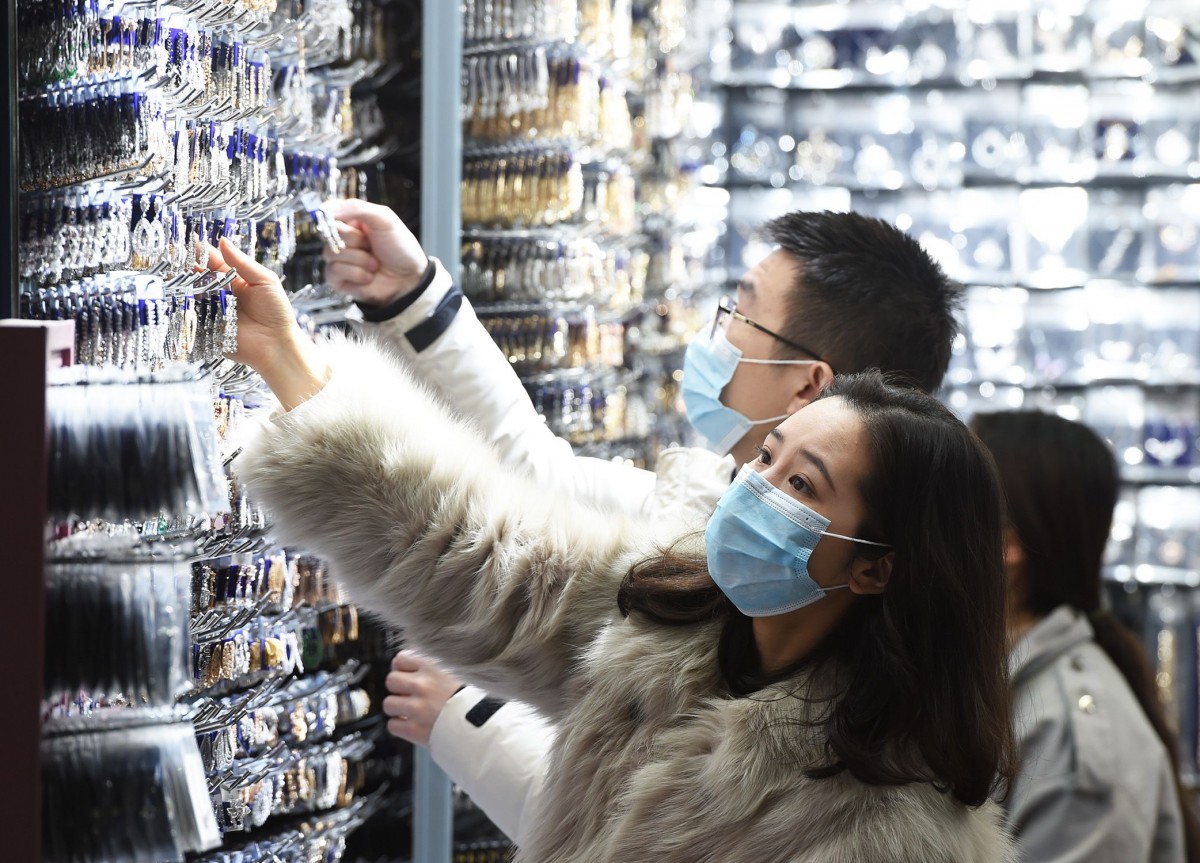What Policy Divergence Means For Metals
Policy divergence between the US and China post-pandemic stands in stark contrast to the aftermath of the Global Financial Crisis. Recently, China has been warning about the impact of high commodity prices on inflation, and the central bank has reportedly asked Chinese banks to tighten credit for the remainder of the year.

Merchants select goods at the Yiwu International Trade Market in Yiwu City, east China's Zhejiang Province
Policy divergence between the US and China post-pandemic may lead some investors to rethink the market trajectory, which is different from what we saw in the aftermath of the Global Financial Crisis. While the monetary and fiscal policy in the US is extremely loose, policy in China is becoming more prudent.
We noted earlier that China's credit growth may have already peaked during the third quarter of 2020, and we highlighted the impact of the de-leveraging risk on copper, which is very different from the post-GFC cycle. Recently, Chinese authorities have repeatedly warned on inflation pressures from rising commodity prices. The multi-year high metal prices have started to impact a range of manufacturers, which have seen margins squeezed as they have been unable to pass on higher input costs. Some home appliance producers have reportedly hiked product prices while others have swallowed the higher costs or even reduced operations. According to the National Bureau of Statistics (NBS), the Chinese producer price index (PPI), which measures the cost for goods at the factory gate, went up 4.4% year-on-year in March, quickening from the 1.7% rise in February. Officials have quoted the rising energy and metals prices as one of the major drivers behind this. The surge in China's Producer Price Index has been stoking global inflation fears as this has a strong positive correlation with the US Consumer Price Index.
Impact on metals
So, what does this shift in China's policy tone mean for metals?
- First of all, it defuses some of the speculative sentiment, particularly in the onshore markets. This could potentially lead to reduced apparent demand, including investment demand, this year and we may see reduced imports from last year's level. In order to understand this, it's important to recall what happened last year. China became a major importer of base metals (mainly copper and aluminum) in 2020, which helped to absorb the excess supply in the ex-China market, inflating China's apparent demand. The strong apparent demand, not just the real demand, has played a key role in the recovery of metal prices since last year, as seen in the trajectory of the price in the LME or COMEX markets. If we look at what inflated the previous year's apparent demand, we see two drivers. The first is actual demand. The second is stockpiles, including China SRB stockpiles, government subsidized commercial stockpiles, and other commercial stockpiles taking advantage of profitable arbitrage. We came into the year with the view that SRB is very unlikely to buy at any comparable level from last year, reportedly at around 600kt. It also doesn't sound sensible for regional governments to continue to subsidize commercial stockpiles.
- Secondly, if inflation pressures gather further momentum, the government could develop concrete measures to tackle the rising raw material prices. The potential measures may include a further tightening of credit growth from certain sectors or even releasing certain metals stocks by the SRB. There have been rumors already that the SRB has released some aluminum stocks though no official confirmation yet.
Compared to the post-GFC period, the prudent policies from China stand in stark contrast to the US and may make some investors hesitant to put on speculative bets. For copper and aluminum, we expect China to import sporadically but overall, at a reduced level from what we've seen last year, which leads to weaker apparent demand. There would be a potential downside risk here, particularly if China were to come up with targeting measures. However, overall, it is expected that real demand for metals will still rise, benefiting from the cyclical uplift and rapid growth in energy transition-related demand. In the meantime, rising inflation expectations and real inflation in the US jumping from the second quarter may spur inflation-hedging trades and give metals another boost if US dollar strength does not rock the boat in the coming months.
Disclaimer: This publication has been prepared by the Economic and Financial Analysis Division of ING Bank N.V. (“ING”) solely for information purposes without regard to any ...
more


